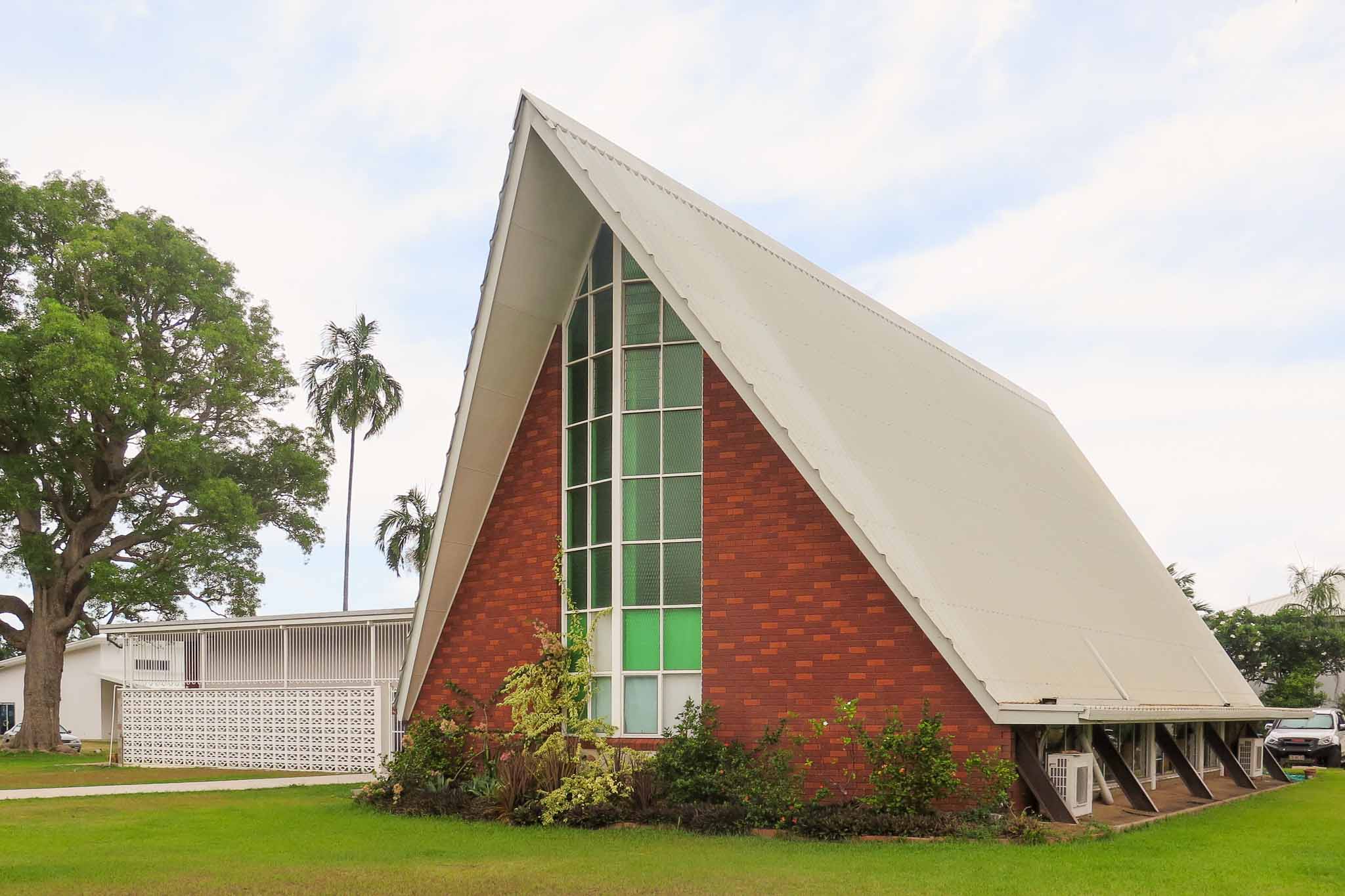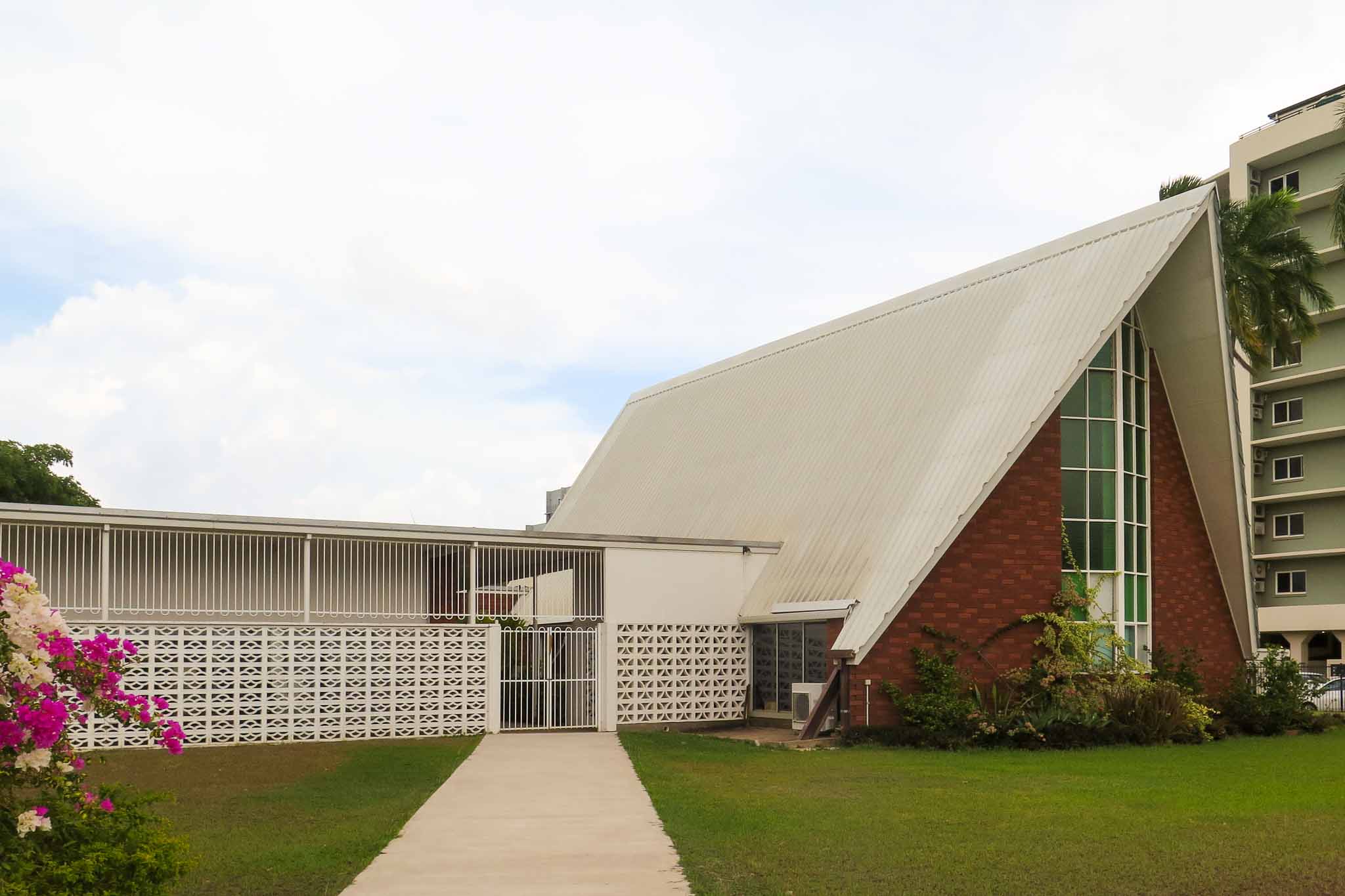


DARWIN SEVENTH-DAY ADVENTIS CHURCH
80 CAVENAGH ST
DARWIN NT 0800
PHOTOS: E FUSCALDO & LIBRARIES AND ARCHIVES NT
80 CAVENAGH ST
DARWIN NT 0800
PHOTOS: E FUSCALDO & LIBRARIES AND ARCHIVES NT
The Seventh Day Adventist Church's distinctive design was realised in 1968 by the office of E. Long Industries Limited, a building firm based in Sydney.
Edmond Long, who devoted nearly 40 years to the church, worked closely with Pastor Ken Wright to realise the project. He provided the building plans from the architects in his office and directed the labour and procurement of building materials from Sydney to Darwin.
The A-frame design experienced a surge in popularity during the 1950s, mainly due to the innovative work of architect Andrew Geller. Geller's A-frame houses, such as the Elizabeth Reese House and the Pearlroth House on the East Coast of the US, were not only affordable and easy to construct and served as idyllic vacation homes, further fueling the design's appeal.
For some, the A-frame design went beyond its practicality and held a spiritual significance. In 1961, Antonin Raymond, a Czech-born American architect, designed the Holy Cross Anglican Church in Tokyo, Japan. He used the A-frame shape to symbolise 'hands at prayer,' a profound and reverent design interpretation. The church, still standing today, serves as a testament to the enduring power of architecture to inspire and uplift.
Edmond Long, who devoted nearly 40 years to the church, worked closely with Pastor Ken Wright to realise the project. He provided the building plans from the architects in his office and directed the labour and procurement of building materials from Sydney to Darwin.
The A-frame design experienced a surge in popularity during the 1950s, mainly due to the innovative work of architect Andrew Geller. Geller's A-frame houses, such as the Elizabeth Reese House and the Pearlroth House on the East Coast of the US, were not only affordable and easy to construct and served as idyllic vacation homes, further fueling the design's appeal.
For some, the A-frame design went beyond its practicality and held a spiritual significance. In 1961, Antonin Raymond, a Czech-born American architect, designed the Holy Cross Anglican Church in Tokyo, Japan. He used the A-frame shape to symbolise 'hands at prayer,' a profound and reverent design interpretation. The church, still standing today, serves as a testament to the enduring power of architecture to inspire and uplift.
